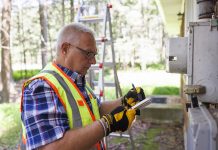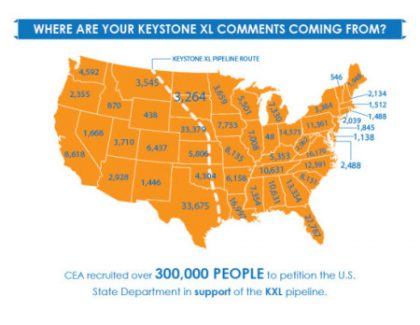Offshore Energy Could Fund S.C. Infrastructure Projects, Newt Gingrich proposes from Consumer Energy Alliance on Vimeo.
Offshore Energy Could Fund S.C. Infrastructure Projects, Newt Gingrich proposes
S.C. Energy & Opportunity Forum
Over 200 stakeholders came together last week – including representatives from the offshore energy industry, federal, state and local elected officials, and the general public – for a several hour long discussion of the merits of offshore energy development for the state of South Carolina.
In between speeches by former Speaker of the House Newt Gingrich, Rep. Tom Rice and SC State Rep. Alan Clemmons, there were three stakeholder panels, focused respectively on potential resources and process development, safety and environmental protection, and the potential economic benefits of offshore development.
Study: Potential Job Creation, Economic Benefits and Revenue Sharing from Oil and Natural Gas Exploration and Production in South Carolina
In January 2009, the US Department of the Interior published a Draft Proposed Outer Continental Shelf (OCS) Oil and Gas Leasing Program for 2010-2015 that, if implemented, would allow one lease sale in the South- Atlantic Region — which includes South Carolina. As a potentially affected state, the input from South Carolina into the development of the Five-Year Plan will play a significant role in whether this lease sale is included in the final version of the OCS Oil and Gas Leasing Program for 2010-2015.
In deciding whether to support inclusion of South Carolina in the 2010-2015 Program, state officials must consider the tremendous economic impacts and potential revenues that could be generated for South Carolina should offshore energy exploration and production take place. By going forward with offshore Atlantic oil and gas leasing and with South Carolina participating in the development of offshore Atlantic resources, a recent report1 estimates that the state’s activity could:
- Create approximately 2,250 new jobs in South Carolina;
- Add approximately $413 million annually to the Gross Domestic Product (GDP); and
- Generate almost $45 billion in government revenues at all levels of government (federal, state and local).
In addition to the direct economic impacts of offshore energy exploration and development, the state may receive tens of millions of dollars annually in royalty revenue sharing receipts that would be generated by OCS exploration and production.
Under current laws, all revenue — except for certain leases in the Gulf of Mexico covered by the Gulf of Mexico Energy Security Act (GOMESA) of 2006 — generated from offshore oil and gas production is directed to the federal government. Some revenue is returned to the states for land and water conservation efforts and coastal impact assistance, while the rest is channeled into the federal government’s general operating budget.
However, if current laws were amended to allow South Carolina to receive the same royalty revenue sharing treatment that is currently granted to the Gulf Coast states, the state could receive up to $250 million annually from offshore exploration and production revenue sharing receipts.
Resources
Southeast Energy Alliance Offshore Study (2009)
Source: 1 The ICF International report can be found at http://www.api.org/ Newsroom/icf_study.cfm
At Energy & Opportunity Forum Newt Gingrich Will Unveil Plan on How South Carolina Can Tap Energy Resource To Boost Jobs and the Economy
Myrtle Beach, S.C. – Southeast Energy Alliance estimates two-thousand new jobs and $45 billion in new federal, state and local revenue can be generated if South Carolina were allowed to develop its offshore energy resources – in particular natural gas.
At its Energy & Opportunity forum today beginning at 3:00 p.m. former U.S. House Speaker and GOP Presidential candidate Newt Gingrich and U.S. Representative Tom Rice along with local leaders and energy experts will outline the plan for South Carolina to bolster its economy through new energy development.
“South Carolina is a magnet for new manufacturing investment,” said Gingrich. “Securing new energy resources can only boost the competitiveness of South Carolina companies making sure new jobs come into the state to stay.”
“Economic development is vitally important to South Carolina, particularly in the Pee Dee region, having South Carolina leaders in the same room discussing energy development can generate sustainable, well-paying jobs and economic growth,” said Adam Waldeck, Executive Director of Southeast Energy Alliance.
In addition to Gingrich and Rice, Wednesday’s forum will also feature: S.C. State Rep. Alan Clemmons, Myrtle Beach Mayor John Rhodes, and both the outgoing and incoming Chairs of the Horry County Council, Gary Loftus and Mark Lazarus.
Organizing partners of the forum include: Southeast Energy Alliance, Myrtle Beach Area Chamber of Commerce, the North Eastern Strategic Alliance, Santee Cooper, the Palmetto Agribusiness Council, the South Carolina Manufacturers Alliance, the Southern States Energy Board, Piedmont Natural Gas, and the National Ocean Industries Association.
Waldeck: Sustainable policy: S.C. player in energy future
As South Carolinians kick off this spring, they will likely start thinking about the summer season, vacation plans, and their potential energy costs. From how high gas pump prices will rise this summer to how much electricity bills may run as air conditioners are blaring, conversations will likely gravitate towards the nation’s energy policy and what our policymakers are doing to help keep consumer’s energy costs down.
But as we find our nation with more available domestic resources each day, the conversation should also be about how the United States can pursue energy independence – in South Carolina and across the nation – in a profitable and environmentally responsible manner.
With all of these resources available to us, onshore and offshore as well, we are presented with the opportunity to ensure our economic health through the capacity to generate our own affordable, reliable fuel sources. But this opportunity will only be realized if we are able to take advantage of our abundant resources in a way that is prudent and in line with our nation’s goal of reaching energy self-sufficiency.
Playing a great part in this national conversation is the state of South Carolina. South Carolina has been a leader in the past in renewable energy initiatives, as well as a state that offers a number of valuable natural resources.
Policymakers across the state are recognizing the importance of advancing legislation that will allow companies to explore and capitalize upon the offshore production opportunities available to us. For instance, just last month Congressman Jeff Duncan introduced the South Carolina Offshore Drilling Act. If passed, the legislation will allow the state to take part in the nation’s five-year plan for offshore production and exploration. Furthermore, the governors of South Carolina and a few other coastal states recently sent a letter to Interior Secretary Sally Jewel, urging her to discontinue federal opposition to offshore drilling.
Legislators aren’t the only ones looking forward to the benefits offshore development will bring. A few years ago, the American Petroleum Institute commissioned a study which found that there could be as much as 3.5 trillion cubic feet of national gas off of South Carolina’s coast. Calculations show that the production from this area has the potential to bring more than 7,500 jobs to the state, have a statewide economic impact of more than $2.2 billion per year, and create state revenues of approximately $87.5 million. In addition to creating thousands of high-paying jobs and providing substantial benefits to the state’s struggling economy, offshore exploration and production could also generate significant revenues for state and local governments.
Another offshore opportunity available to South Carolina is through wind energy – a source of energy that is gaining prominence throughout the state as more investments are being made in that industry. South Carolina is home to the second largest offshore wind resource on the East Coast, and aims to generate 1,000 megawatts by 2020. Accordingly, the state is investing in new wind turbines, including ones currently being manufactured in the Palmetto state.
According to the American Wind Energy Association, at least 17 facilities in South Carolina currently manufacture components for the wind energy industry. GE, the leading wind turbine manufacturer, has a turbine assembly facility in Greenville, while other wind energy supply chain manufacturers, including Kaydon Bearnings and PPG Industries, also operate plants in the state.
States such as South Carolina are primed to be leaders in energy, given their position and connection to offshore resources.
Pursuing various energy sources such as those mentioned above will lead to a diverse and stable energy policy. In fact, the Southeast Energy Alliance will be discussing the Palmetto State’s offshore energy potential on May 1 in Myrtle Beach at the “South Carolina Energy & Opportunity Forum,” which will feature speeches by former Speaker of the House Newt Gingrich and Reps. Tom Rice and Jeff Duncan.
With a need to diversify our energy sources and improve energy efficiency to ensure stable and affordable energy supplies for consumers, it is clear that states like South Carolina will need to lead by example, given their position and connection to their available energy resources. With this in mind, it is important that our leaders strongly consider the options available to them, and continue to lead the nation in promoting a balanced, all of the above approach to energy policy. This approach will help ensure that we are moving forward toward an energy future that is strong, reliable, and beneficial to all.
Waldeck is executive director of the Southeast Energy Alliance.
This article first appeared at Myrtle Beach Online.
Holt: Whatever the Vehicle, Balance is Key
Whatever the Vehicle, Balance is Key
By David Holt, President, Consumer Energy Alliance
Despite dramatic advances in energy production in the last several years, the United States continues to a lack a clearly defined national energy policy. Lack of sustained activity at the congressional level has effectively forced policy making in to the hands of federal regulators, many of whom remain constrained by limited resources and near constant litigation by groups opposed to energy production (of any kind). This situation is not only undesirable; it imperils the short- and long-term availability of dependable, affordable energy for consumers.
Implementing a balanced energy policy has less to do with the legislative vehicle, and more to do with lawmakers aligning on a coherent and forward-looking strategy that plays to our energy strengths and aims to keep energy prices low. To address the challenges of today and tomorrow, CEA urges policy makers to make the following recommendations top priorities:
· Expand access to domestic energy resources including onshore and offshore oil and natural gas and unconventional oil and natural gas resources;
· Advance efforts to improve and streamline the regulatory process for energy production and energy infrastructure projects;
· Support vital energy infrastructure maintenance and expansion projects;
· Focus federal support for development of alternative and renewable energies on research, development, and demonstration efforts;
· Promote efficiency and sustainability practices; and
· Expand science, technology, engineering, and mathematics (STEM) education and job-training opportunities related to the energy sector.
Energy production is not, nor should ever be, a choice between the environment and development. All energy development – whether it is coal mining or construction of a solar farm – can be done safely so long as industry continues to adhere to best practices and regulators have the resources to oversee projects effectively. The United States is home to some of the world’s most innovative, forward-thinking energy companies, many of which have demonstrated remarkable advances in environmental safety and continue to invest in technology that will further advance energy efficiency, sustainability, and environmental protection.
In the coming years, the United States has a unique opportunity to be the dominant force in energy production and become energy self-sufficient, if policy makers chose the right path forward. The increased capacity for energy production is already having enormous positive geopolitical implications. An energy self-sufficient America, with a balanced national energy policy is a secure, strong, and vibrant America, with a growing economy, improved national security, and standing in the world for decades to come.
CEA urges the Obama Administration and the 113th Congress to work together in a collaborative manner to advance these recommendations, so that pragmatism and the greater good trump politics and party agendas.
Keystone XL By The Numbers
The U.S. State Department finishes this week collecting public reaction to their draft environmental statement on the Keystone XL pipeline it issued in March. Consumer Energy Alliance is a strong advocate for advancing the KXL pipeline as part of an “all of the above” American energy plan. Along with its state based partners, CEA recruited over 300,000 people to petition the U.S. State Department in support of the KXL pipeline. There is a strong support, both in public opinion and among those directly impacted by the pipeline’s construction. The numbers make the case:
$5.3 billion is the amount of money TransCanada will invest in the United States to build the Keystone XL pipeline.
300,000 is the number of Americans Consumer Energy Alliance and its grassroots partners recruited in April to petition the U.S. State Department in favor of building the Keystone XL pipeline, which would transport up to 830,000 barrels of oil a day to U.S. refineries.
50,000 people living along the route of the proposed pipeline who told the U.S. State Department they are in favor of the jobs and energy security created by the Keystone XL project.
42,100 is the number of new jobs which will be created by Keystone XL construction according to the U.S. State Department. TransCanada says it will hire welders, mechanics, electricians, pipefitters, laborers, safety coordinators, and heavy equipment operators to complete construction.
1,676 days have passed since TransCanada first applied for a presidential permit to build the KXL pipeline.
200 state legislators have written to the U.S. State Department with their support for the Keystone XL pipeline.
66 percent of Americans support building the Keystone XL pipeline. Five national polls have a majority of Americans supporting Keystone XL.
62 U.S. Senators voted in April to support Keystone XL.
43 Economic development officers from along the route are supporting Keystone XL.
37 Mayors and city council members living along the route who support Keystone XL.
20 County officials representing communities along the Keystone XL.
8 individual state legislatures have passed resolutions, in at least one House, supporting the Keystone XL pipeline.
1 is the number of U.S. Presidents who have visited the construction site of the Gulf Coast Pipeline Project.
Build the Keystone XL Pipeline; CEA and AIF Say “We Need it Now”
~ Consumer Energy Alliance and Associated Industries of Florida gather more than 27,000 comments from Floridians supportive of the pipeline~
TALLAHASSEE, Fla. – Consumer Energy Alliance (CEA), in partnership with Associated Industries of Florida (AIF), recruited 27,787 Florida residents who petitioned the U.S. Department of State to approve construction of the Keystone XL Pipeline because of the jobs, energy and economic security generated by the project.
“Stronger energy security and lower fuel prices aren’t the only things that come with the new Keystone XL Pipeline. Construction will bring new jobs, new customers, new business, new sales and new investment,” said Brewster Bevis, AIF Senior Vice President, State and Federal Affairs. “Investing in infrastructure projects is a big part of what can be done to boost the economy, and we need that boost now.”
The proposed Keystone XL Pipeline would deliver 830,000 barrels of U.S. and Canadian crude oil per day to refineries along the Gulf Coast in Texas. Its construction will help create more than 42,000 jobs nationwide, and generate more than $20 billion in new economic growth for the struggling U.S. economy.
“The Keystone XL Pipeline will be the safest pipeline ever built in the United State. Not only will it help reduce fuel prices for families coast to coast, it will dramatically improve our energy security by reducing our reliance on overseas oil,” said Kevin Doyle, CEA Florida Executive Director. “These comments that we are submitting today from thousands of Floridians reflect what people across the country are saying: we need jobs, we need a stronger economy, and we need to build the Keystone XL Pipeline.”
Keystone XL received approval from Canada’s National Energy Board in 2010, but the project also requires a Presidential Permit from the U.S. Department of State because it crosses an international border.
In January, a bipartisan coalition of 53 senators, including Sen. Marco Rubio (R-Fla.), sent a letter to President Obama urging him to approve the Keystone XL Pipeline. The U.S. Senate voted in March to approve the proposed Keystone XL Pipeline in an amendment to the Senate budget. Both Sen. Rubio and Sen. Bill Nelson (D-Fla.) voted in favor of the pipeline.
CEA: State Department Should Approve Keystone XL for Economic & Security Benefits
CEA today urged the Obama Administration to swiftly approve the Keystone XL pipeline given the large economic and national security benefits the project will provide.
GRAND ISLAND, NE – Michael Whatley, Executive Vice President of Consumer Energy Alliance, provided comments supporting the construction of the Keystone XL Pipeline today at the U.S. State Department’s Public Hearing on the project and the agency’s environmental review. As part of those comments, Whatley made the following statement:
“CEA strongly supports the Keystone XL pipeline because of the economic benefits it will provide – not only to Nebraska, but for the nation as a whole. According to a recent study by well-respected Nebraskan economist Ernie Goss, the pipeline will support an average of 916 new direct and indirect jobs in Nebraska per year between 2013 and 2029 with a peak of 5,514 jobs during the two-year construction period. Even more, this project will generate over $1.8 billion worth of economic activity in the state, including over $58 million in property taxes. That’s a lot of money that will go to improving Nebraska’s public schools, roads, and hospitals.
“The Keystone XL Pipeline project will also strengthen our national energy security. Canada is our neighbor, our ally, and our largest trading partner. The 830,000 barrels of oil per day that this pipeline will bring to GulfCoast refineries will be coming from places like Montana, the Dakotas and Canada. It is not subject to violent revolutions and chronic instability present in Venezuela and the Middle East. It cannot be used as a political tool like Russian oil can. It is highly discounted from the prices we pay for oil from the Persian Gulf and will help drive down fuel prices for both our military and American drivers.
“Not only will the pipeline bring great economic and energy security benefits to Nebraska and the United States, it will do so without harming our water or our environment. The State Department’s extensive environmental review of the pipeline once again concludes that the pipeline will not adversely affect the local environment. Pipelines remain the safest and most energy-efficient means of transporting fuel. Currently, over 2.6 million miles of pipeline crisscross the United States, delivering oil and natural gas safely to millions of American consumers. Fortunately, Keystone XL will be built will state-of-the-art technology and will be the safest pipeline constructed in the United States.
“Given these facts, it’s not surprising that a majority of Americans support the project. A recent Pew Research poll found that 66% of the American public supports the project, support which “spans most demographic and partisan groups.”
“In closing, I am asking – on behalf of energy consumers nationwide – for the Obama Administration to swiftly finalize its review process and grant the Presidential Permit to allow construction of this vital infrastructure.”















